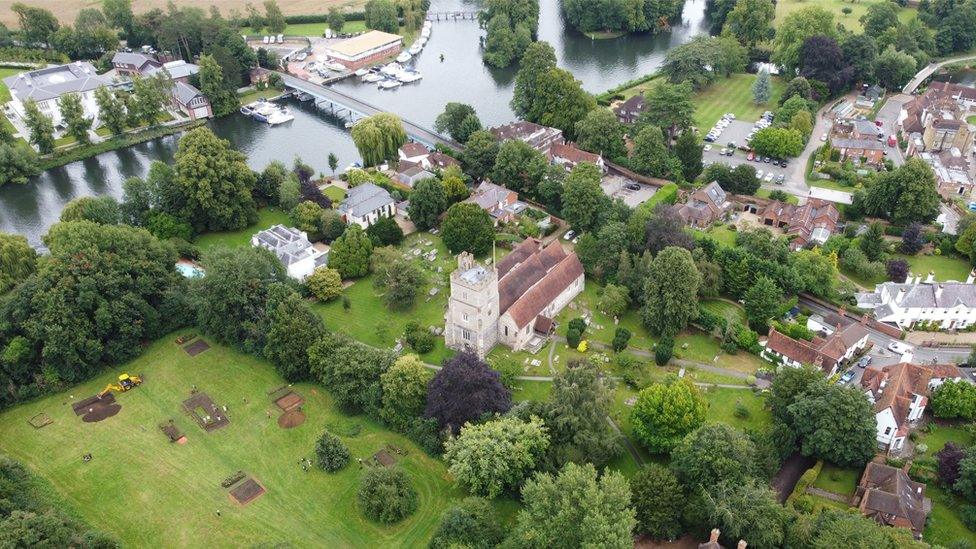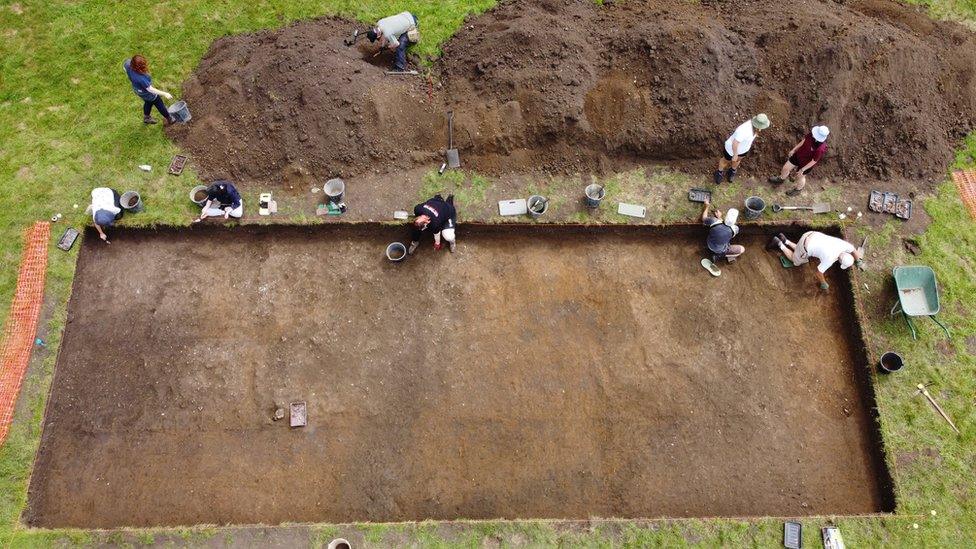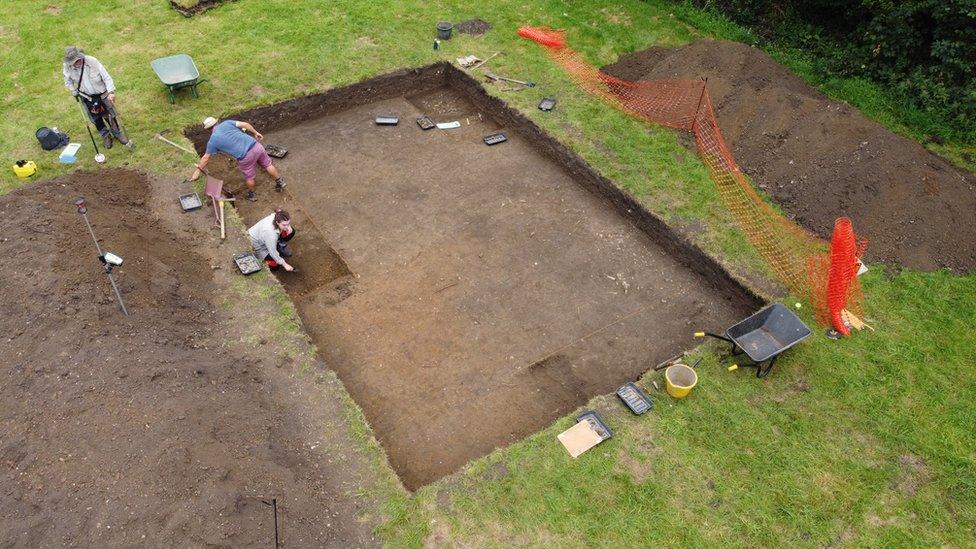Queen Cynethryth's 'lost' monastery found next to Cookham church
- Published

Evidence of the "lost" monastery was uncovered at Holy Trinity Church in Cookham
The site of an 8th Century monastery that was believed to have been lost has been unearthed next to a church.
The exact location of the monastery ruled by Queen Cynethryth - the widow of the powerful King Offa of Mercia - had long baffled historians.
However, archaeologists said they had finally found it in the grounds of Holy Trinity Church in Cookham, Berkshire.
It is hoped it will give a unique insight into one of the most prominent women of the early middle ages.
Cynethryth, who it is believed died in 798 AD, is the only Anglo-Saxon queen known to have been depicted on a coin.

Archaeologists at the University of Reading have been excavating the site this summer
Written records showed she became royal abbess of a monastery after the death of her husband, King Offa, who had ruled Mercia, one of the main Anglo-Saxon kingdoms.
Dr Gabor Thomas, the University of Reading archaeologist leading the excavation, said: "Cynethryth is a fascinating figure, a female leader who clearly had genuine status and influence in her lifetime.
"Not only were coins minted with her image, but it is known that when the powerful European leader Charlemagne wrote to his English counterparts, he wrote jointly to both King Offa and Queen Cynethryth, giving both equal status.
"We are thrilled to find physical evidence of the monastery she presided over, which is also very likely to be her final resting place."

It is hoped artefacts found at the site will provide an insight into life for monks and nuns in the 8th Century
The church had been one of a number of rumoured locations for the site, with historians aware of a network of monasteries established along that part of the Thames at the time.
This was to take advantage of important trading arteries, with Cookham also having particularly strong strategic importance because it was on the contested boundary between Mercia and Wessex.
Remains of timber buildings that would have housed the inhabitants of the monastery were among the finds as the archaeologists made their breakthrough.
'Puzzled historians'
They have also unearthed artefacts including food remains, pottery vessels used for cooking and eating, a delicate bronze bracelet and a dress pin, likely to have been worn by female members of the community.
Dr Thomas said that despite its documented royal associations, little was known of what life was like at the monastery, or others nearby.
"The items that have been uncovered will allow us to piece together a detailed impression of how the monks and nuns who lived here ate, worked and dressed," he said.
He added that the lost monastery of Cookham had long "puzzled historians" but the mystery had now been solved "once and for all".

Follow BBC South on Facebook, external, Twitter, external, or Instagram, external. Send your story ideas to south.newsonline@bbc.co.uk, external.